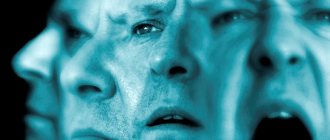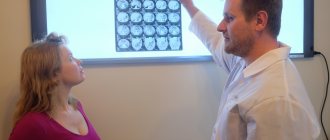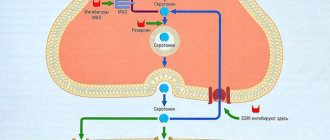Psychological
Everyone should learn such techniques, as they effectively help to establish psychological balance and independently recover from neurosis at the stage of its first manifestations.
- Meditation. Allows you to achieve a state of relaxation - bodily and mental. Sitting in a calm environment in a comfortable position and closing your eyes, a person first focuses on his slow breathing, trying not to think about anything. Then spend 5-10 minutes imagining something pleasant, beautiful, without focusing on thoughts. Open your eyes and come out of meditation while exhaling.
- Autogenic training. Bodily relaxation is combined with positive self-hypnosis. In a calm environment, calm your breathing, imagining that when you exhale, tension and life problems go away. Gradually relax all the muscles of the body, feeling that heaviness and warmth appear in them. Then positive attitudes are spoken. Then they come out of the state by opening their eyes according to an internal order and shaking off the heaviness from the body like sand. Regular exercises are very effective for neurosis.
- Crowding out. The task is to release, throw out, let go of the accumulated negativity and aggression. How to help yourself with neurosis using this technique:
- write down troubling problems on paper, and then destroy what was written, turning the paper into ash and smoke, imagining that the problems will disappear;
- scream loudly into space or into a pillow, as an option, if a deserted place is inaccessible - neurotic emotions also come out along with the scream;
- take out anger and aggression by beating a punching bag.
Top 3 neurotic conditions
In the ranking of neuroses, neurasthenia is in first place. This is when “I want to, but I can’t, because nothing works out and at the same time I’m very tired.” This state is accompanied by constant replaying in thoughts of certain events, accompanied by a sleepy state.
This is followed by obsessive-compulsive neurosis, which experts classify as an anxiety-phobic disorder. A person worries whether he forgot to turn off the water, lock the door, or feed the cat. For this type of disorder. A person can harm himself or cause physical injury.
The third type of neurosis is hysterical neurosis. Hysterical neurosis is caused by the internal conflict “I want, but they don’t give it to me.” A person in public may demonstratively begin to cut his hands, he may even develop deafness or blindness, so much does he want to draw attention to himself.
There are other types of neurotic conditions. By the way, a midlife crisis is also a neurosis, which psychologists call noogenic or existential neurosis.
It is worth noting that with any type of neurosis, the first thing that suffers is the quality of a person’s personal life, his family, work and external environment.
Physical activity, sports
Neurotic disorders, especially during periods of exacerbation, are accompanied by anxiety and fear. The body's response is the release of stress hormones, which requires the person to take some action. This stress is best relieved by physical activity. Don't overwork yourself, it can only make the negative worse. It is better to choose something routine - such as cleaning the apartment or acceptable - aerobics, swimming, exercise, a walk in the park.
Mode
Establishing a clear daily routine and constant meal times helps normalize the mental state of neuroses. The body stops experiencing stress from confusion, and the individual biological clock is adjusted.
The composition of the diet also matters. Those who have recovered from neurosis note that the condition improves when they give up foods that excite the nervous system. This includes coffee, alcohol, pickles, spicy dishes, and sweets.
Hobby
You can take your mind off troubles and extinguish negative emotions by finding something interesting for yourself that you can do for a long time. Psychotherapists call reading one of the best helpers for neurotic disorders.
What is neurosis?
Neurosis is a psychogenic and stress-induced disorder of the mental apparatus. The emergence of neurosis is provoked not by an event, but by our attitude towards it.
Clients who seek advice from a psychologist about neurotic disorders name the following most common causes of neuroses:
- socio-economic problems in life that cause a feeling of hopelessness;
- constant psychological stress;
- high expectations leading to disappointment.
At the same time, neurosis for most people is a set of obsessive destabilizing thoughts and physiological symptoms (heart pain, tachycardia, panic attack or other manifestations) that do not allow them to live a full life and are periodically repeated. In reality, all these symptoms reflect the internal psychological state of a person and are an expression of his worldview.
Exposure to color, music, scents
- Music. Listening to music is a known way to relieve stress. Usually they choose calm, relaxing melodies and classics. Music therapy can also be carried out in an active form, singing your favorite songs or playing instruments that you like. The combination of reciting literary works to music has a combined effect on the psychological state of neuroses.
- Color. You can help yourself with neurosis by surrounding yourself with furnishings of a suitable color. Green, blue, pink, blue, especially in combination with white, relieve tension and calm.
- Fragrances. Used in aroma lamps, candles or added to the bath. The scents of mint, eucalyptus, rose, tangerine, lavender, and bergamot have a calming effect on neuroses.
How to get rid of neurosis and neurotic state?
Neurosis is characterized by a violation of the psychological state that occurs in a person in the process of prolonged moral pressure, internal contradictions, chronic fatigue, and a general violation of the daily routine, nutrition and sleep.
The treatment of neurosis should be based on an integrated approach. The ideal fight against neurosis would be to combine psychoanalytic therapy with a person’s recognition of his neurotic state, accompanied by a persistent desire to overcome it. At the same time, it is possible to include medications in the treatment of neuroses that are prescribed exclusively by a doctor.
Pharmacotherapy gives excellent results, but only with a short-term effect. As soon as the effect of the drug ends, the neurosis and neurotic state returns with the original pronounced effect.
Here is a list of medications that doctors usually prescribe for drug therapy for neurosis:
Antidepressants
An antidepressant is a drug that blocks an enzyme that destroys dopamine, serotonin, and norepinephrine, as a result of which the concentration of such hormones increases. The mood of the person suffering from neurosis improves accordingly. There is no habituation from the use of these drugs, the speed of reactions does not decrease, and there is no need to fear any side effects. However, the disadvantage of treatment with antidepressants is that this drug accumulates in the blood only over time and the corresponding reactions appear only after about a couple of weeks. The treatment course is usually two to three months.
Tranquilizers
Tranquilizers reduce reactions to various stimuli, inhibit the nervous system and have an anti-anxiety effect. The main danger of these drugs is getting used to them and losing concentration. After taking tranquilizers, you should not drive vehicles or do work that requires precise coordination of movements.
Sedatives
These medications help treat mild types of neurotic disorders. Their action is approximately similar to that of tranquilizers, but their effectiveness is not as high. There is no addiction to sedatives, and there are generally no side effects. When treating neuroses, they often resort to harmless herbal sedatives, such as valerian tincture, hawthorn decoction, and so on. Although there are also medications, by the way, made on a plant basis, such as Fitorelax, Novo-Passit and others.
Let me remind you that neurosis responds well to pharmacological therapy, which gives only a short-term effect! The disease returns and intensifies with each new round, therefore, when the first signs of a neurotic state occur, psychoanalytic therapy is strongly recommended.
Psychoanalytic therapy, which in turn is included in the health insurance system in a number of European countries, can greatly help stabilize the psycho-emotional state, get to the bottom of internal conflict and phobias, and explore the nature of the emergence of a neurotic state and panic attacks.
Origin and causes
The name “neurosis” originated back in 1776 during a dispute between two doctors studying mental disorders. The Italian G. Morgagni specialized in pathological anatomy. He argued that neurasthenia is a consequence of physiological changes in organs and tissues. In his opinion, the pathology could be provoked by a protracted inflammatory process, tissue degeneration, or genetic characteristics. The Italian specialist’s opponent was the Scot W. Cullen. He considered the only possible cause to be the combined influence of neuropsychic factors. It was Cullen’s opinion that turned out to be correct, and the term he proposed was included in the official list of diagnoses.
In-depth study of the issue over many years has not yielded a comprehensive definition. Psychiatry and biology give different explanations for the deviation in question. Soviet scientist Ivan Petrovich Pavlov wrote that the essence of nervousness is a prolonged overstrain of nervous processes in the brain associated with destructive external stimuli. Sigmund Freud saw the reason in the opposition of the hidden instinct to social prohibitions. American psychologist Karen Horney blamed childhood trauma. Modern experts identify several prerequisites that provoke the disease.
Treatment methods for neurasthenia
The treatment tactics for neurosis are determined by the doctor depending on the severity of the pathology. In some cases, you can get rid of HP using psychotherapy alone. Properly selected psychologist activities are the fundamental technique for treating neurasthenia. The reversibility of neurosis and a positive reaction to mental influences allows you to quickly achieve healthy thinking. Based on the specifics of the methods, there are:
Pathogenic. Designed to fight the root cause. They help identify conflict, resolve internal contradictions, and mitigate childhood trauma, the consequences of which have become a pathology in adulthood. The most effective methods of therapy are: psychodynamic, systemic, cognitive, integrative.
Symptomatic. They allow you to correct behavior during stressful situations, help lay down the principles of objective perception, and independently stop panic symptoms. They use hypnotherapy, breathing techniques, and relaxing painting.
Sometimes the diagnosis requires medical intervention. Usually, drugs act as a “second fiddle” to achieve rapid physical and mental relief. These products should only be consumed under the supervision of a specialist. The drugs have a wide range of limitations and side effects.
Application of instrumental therapy
In accordance with the examination results and the attending physician’s prescriptions, instrumental therapy is carried out:
- audio-visual stimulation method;
- light therapy;
- biofeedback (biofeedback) sessions;
- transcranial magnetic stimulation (TMS);
- intravenous laser blood irradiation (ILBI);
- “neural disk” is a computer treatment program that the patient, upon discharge from the hospital, can independently continue to use at home;
- massage.
What are the most common signs of neuroses?
Among the mental symptoms, you should pay attention primarily to the following: • Emotional discomfort that occurs for no apparent reason. • Problematic communication with others. • Unpreparedness to make decisions. • Inadequacy of self-esteem with its overestimation or underestimation. • Frequent anxiety, a feeling of fear, anticipation of something unpleasant and scary, the development of phobias, the appearance of panic attacks. • Perversion of the system of values, aspirations, preferences, cynical attitude towards life and the environment. • Irritability and reduced resistance to stress. • Touchiness, tearfulness, increased vulnerability. • Obsession with traumatic circumstances. • Rapid fatigue due to intellectual stress, impaired memory, ability to concentrate. • Increased sensitivity to sudden changes in temperature, loud sounds, bright light. • Sleep disorders with difficulty falling asleep, night awakenings, superficial character, disturbing dreams, morning fatigue. A neurotic disorder may be indicated by physical symptoms of neurosis such as: • Pain of various localizations (headache, heart, gastrointestinal, muscle and joint) • Sudden changes in pressure. • Disorders of the vestibular apparatus with dizziness, imbalance, etc.: difficulty maintaining balance, dizziness. • Eating disorders, expressed in overeating or undereating, a sudden feeling of hunger with a quickly onset feeling of satiety. • Psychalgia (physical pain accompanying strong mental experiences, otherwise mental pain), increased concern for one’s own health, hypochondria. • Autonomic disorders - surges in blood pressure, tachycardia, cough, frequent urge to urinate, gastrointestinal dysfunction, sweating, chills, numbness and coldness of the extremities, etc. • Speech disorders in the form of stuttering. • Sexual dysfunction (decreased potency and libido) is rarely observed.
If neurosis is not treated in time, the symptoms intensify, and individual symptoms may become generalized. For example, pressure surges during stressful situations can turn into vegetative-vascular dystonia (otherwise neurocirculatory dystonia), associated with dysfunction of its sympathetic and parasympathetic departments and a violation of the neurohumoral regulation of the cardiovascular, respiratory system, intestinal motility, etc.
Neurosis is not a whim, but a serious illness
In modern society, a tendency has emerged to stigmatize patients with neuropsychiatric disorders. Their suffering is underestimated, considered a weakness, and the significance of dangerous symptoms is minimized in every possible way. Ashamed of being reproached for imaginary weakness and laziness, people put off seeing a doctor for a long time. This is a fundamentally wrong tactic that leads to detrimental consequences for the entire body.
Psychosomatic connections gradually, gradually wear away the will and provoke chronic disturbances in the functioning of the whole organism.
If patients neglect their health and engage in denial, self-medication, or use advice from online forums, they risk developing comorbidities:
- clinical depression;
- suicidal tendencies;
- urination disorders;
- functional dyspepsia;
- idiopathic hyperthermia;
- sexual dysfunctions;
- sleep and eating disorders;
- angina pectoris, arrhythmia, myocardial infarction;
- alcohol or drug addiction;
- loss of motor and sensory functions of the nervous system;
- erosive and ulcerative lesions of the gastrointestinal tract.
Causes of nervous system breakdown
The development of the disease is facilitated by many factors that can be divided into groups.
Biological factors primarily include poor heredity. Also on the list:
- severe pregnancy of the mother, infectious diseases she suffered during this time;
- difficult childbirth associated with injuries to the baby;
- features of the nervous system;
- lack of sleep;
- physical and emotional exhaustion;
- lack of rest, relaxation;
- intoxication of the body with alcohol, tobacco or other substances;
- lack of vitamins;
- somatic diseases.
The psychological causes of the development of neurasthenia are psychological trauma received in childhood. In addition, it also contributes to:
- sudden stress under circumstances important to the individual, personal tragedy;
- long-term psychotraumatic situation, conflict;
- pessimistic mood.
Social factors cannot be avoided:
- characteristics of the family environment in childhood, upbringing, conditions of growing up;
- receiving a large flow of information, the processing of which requires special conditions and a lot of time;
- unique social circle, interests;
- dissatisfaction of personal aspirations.
Holistic diagnostic program
The result of which is an accurate diagnosis. As is known, only accurate knowledge about the factors that caused the development of the disorder, about the presence or absence of concomitant diseases, makes it possible to determine the correct and effective treatment strategy.
Conducting a neurophysiological examination (electroencephalography, evoked potentials), diagnostics by a neuropsychologist, a clinical interview, blood tests (neurotest, visceral test), methods of visualizing brain structures (CT, MRI) make it possible to make an extremely accurate diagnosis.
The result of a detailed and complete diagnosis is the organization of a consultation consisting of the head of the clinics, Doctor of Medical Sciences, Professor V.L. Minutko, attending physician psychiatrist-psychotherapist, neurologist, endocrinologist and immunologist. By decision of the council, an individual treatment and rehabilitation program for the patient is adopted. At the end of it, a final consultation is also held.
Progress and consequences of late treatment
The development of neurosis does not have a specific time frame. Progress depends on the root cause, current circumstances and the strength of character of the person himself. Experts distinguish three stages:
- Initial. A person reacts poorly to stressful situations. Feels irritated and angry for no reason. May complain to a specialist about sleep problems.
- Moderate (hypersthenic). Characteristic signs are associated with increased excitability. Overexcitation is observed, hysterics and attacks of anger are possible.
- Hyposthenic. Accompanied by loss of interest in life. The patient gets tired excessively and quickly, falls into apathy.
At the first manifestations of HP, it is urgent to conduct a full examination. Long-term non-intervention leads to difficulties in the family and at work, inadequate assessment of personality, and the development of concomitant chronic diseases (disorders of the heart rhythm and the muscle itself, gastrointestinal pathologies, vascular disorders). If a person does not treat neurosis for more than 6-24 months, he may encounter a neurotic personality change. In this case, the condition will be irreversible. Outbursts of anger will increase, self-control will decrease to a minimum, and obsessive-compulsive syndrome may appear.










